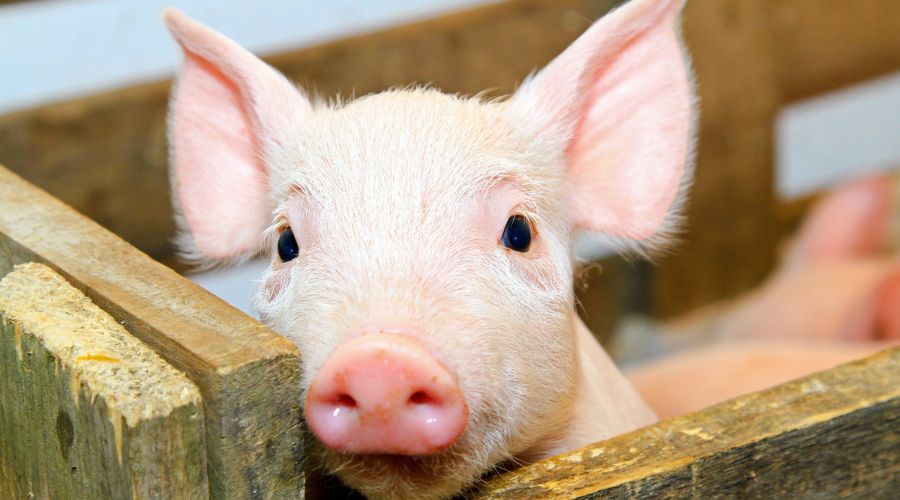Pig producers warned to prevent and prepare for ASF
26th March 2025
The National Pig Association has urged pig producers to make every effort to prevent an outbreak of African swine fever (ASF) and to ensure they are prepared in case the virus does hit their own unit or one close by.

During a discussion on ASF, the NPA’s Pig Industry Group (PIG) was told the UK is much better prepared for an outbreak than it was a year ago, following discussions led by NPA and AHDB.
However, NPA senior policy adviser Katie Jarvis and AHDB senior animal health and welfare scientist Miranda Poulson stressed that an outbreak could have a huge impact on individual businesses and the wider industry.
Contingency planning
They explained how, over the last year or so, three supply chain workshops, which have included Defra, APHA and the Food Standards Agency (FSA), have been held.
The first was a pre-farmgate table-top simulation exercise looking broadly at what would happen on a farm when ASF was suspected and then confirmed.
A second focused on what would happen post-farmgate, particularly at the abattoir. A few weeks ago, a third covered transport, feed and haulage and issues like deadstock and rendering.
Ms Poulson said that there had been a healthy two-way information exchange with Defra and its agencies. “Over the last nine to 12 months, we’ve built up really good relationships with individuals. It has been a major step forward.
“They have all been really productive, but they tend to open more cans of worms than they close, so we are continuing to look for answers to the new questions that keep emerging,” she continued.
There were also two producer-facing workshops last year, aimed at encouraging producers to start putting together a contingency plan for their farm.
Ms Poulson added: “We tried to get across is the broad brush of what will happen, but also the idea that there is no fixed battle plan and there never will be, because everything is so case by case and risk-based.
“It depends on what animal it is detected in first, domestic or feral pig, where it is, how long it might have been in the country, where it might have gone. The scale of the restrictions imposed will always depend on those factors. There is not a concrete sequence of events, necessarily.”
Contingency plan documents
Ms Jarvis stressed that while APHA will largely manage any infected premises, producers need contingency plans to cover the eventuality of being in a control zone, where potentially stringent restrictions will apply, including pig standstills and limited access.
She highlighted the template contingency plan documents drawn up jointly by AHDB and NPA, which are available from both organisations. These are continually updated and can be altered to suit individual farms.
“If you are caught up in a zone, you could use that document to understand most of what would happen. We really want people to start thinking now about a contingency plan, if you haven’t already,” she said.
Cleansing and disinfection
Affected units would initially be subject to cleansing and disinfection (C&D) by APHA and would then be required to undertake and pay for secondary C&D themselves before they could restock.
Ms Jarvis explained that there is not yet a full explanation of what that would look like for a pig unit, but a group is now looking at developing secondary C&D protocols for ASF and classical swine fever for indoor and outdoor units.
While this process in Europe is fairly well-trodden for indoor units, the rest of Europe has relatively few commercial outdoor pig units, which makes this aspect much more complicated, on top of the existing challenges of tackling the virus outdoors.
For example, ASF virus can live in the soil for a long time, and it could take 18 months to two years to restock on land on which pigs have been slaughtered and where blood has got into the soil. It remains unclear how that land should be treated. In addition, wooden equipment and fences cannot be cleaned by C&D, so producers would incur extra costs here.
Some of these questions are being addressed with ongoing research by APHA and the Pirbright Institute, as well as learnings from Europe.
“The process will be longer and harder for outdoor units, which is another reason why biosecurity is so important,” Ms Jarvis added.
Protocols for the use of sentinel pigs to prove disease-free status after the secondary C&D, a requirement for restocking, also remain unclear.
There was a wider discussion on other aspects of pig production that would be affected by an outbreak, such as pig movements and keeping semen supplies going in the face of restrictions.
Key messages
The group agreed that, in light of these sobering discussions, renewed efforts need to be taken to urge all pig producers to steadfastly adhere to strict biosecurity procedures at all times.
After the meeting, Ms Jarvis summarised five key messages for producers to help them prevent and prepare for ASF:
- It is far more likely that you will be in a control zone than be an infected premises, so you need to be prepared for a long standstill.
- Write and regularly review a contingency plan with your vet and make sure all your staff are familiar with the plan.
- Whether you are an infected premises, caught in a control zone or a contact premises, the better your movement records and the more information you can provide APHA, the quicker restrictions can be lifted.
- We are preparing, but many decisions will be risk assessed and made on a case-by-case basis, so it is impossible to account for all scenarios.
- Secondary C&D will be complicated and costly to producers, so prevent the disease from getting onto your farm in the first place – good biosecurity does work.
Read more livestock news.



